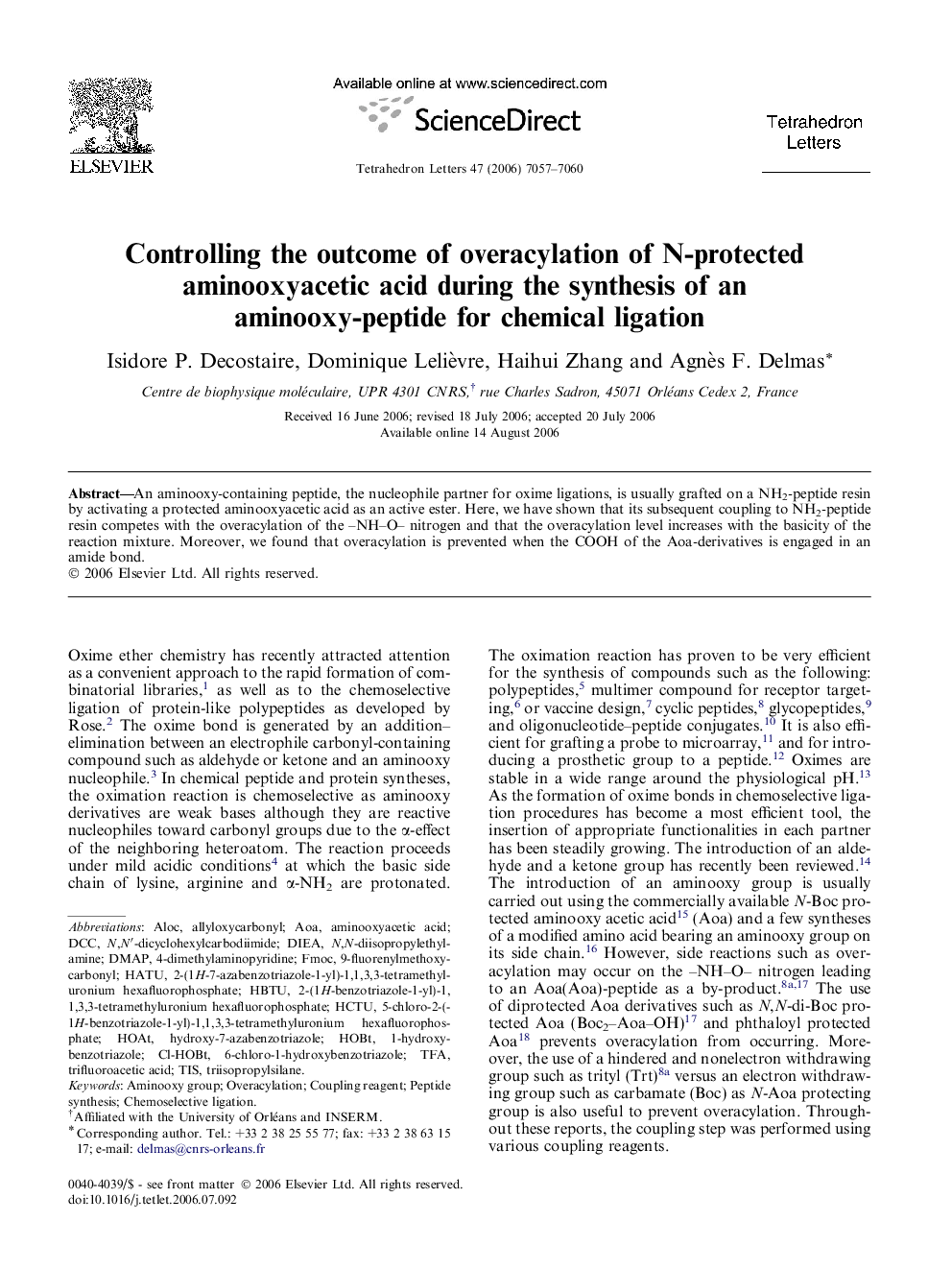| Article ID | Journal | Published Year | Pages | File Type |
|---|---|---|---|---|
| 5288809 | Tetrahedron Letters | 2006 | 4 Pages |
Abstract
An aminooxy-containing peptide, the nucleophile partner for oxime ligations, is usually grafted on a NH2-peptide resin by activating a protected aminooxyacetic acid as an active ester. Here, we have shown that its subsequent coupling to NH2-peptide resin competes with the overacylation of the -NH-O- nitrogen and that the overacylation level increases with the basicity of the reaction mixture. Moreover, we found that overacylation is prevented when the COOH of the Aoa-derivatives is engaged in an amide bond.
Keywords
HOAtHCTUCl-HOBtAlocHBTUTriisopropylsilaneDIEAAOAFMOC4-dimethylaminopyridineTISDMAPHOBtTFADCC1-hydroxybenzotriazole2-(1H-benzotriazole-1-yl)-1,1,3,3-tetramethyluronium hexafluorophosphate6-chloro-1-hydroxybenzotriazole9-fluorenylmethoxycarbonylN,N′-dicyclohexylcarbodiimideN,N-diisopropylethylamineallyloxycarbonylaminooxyacetic acidTrifluoroacetic acidPeptide synthesisHATUcoupling reagentChemoselective ligation
Related Topics
Physical Sciences and Engineering
Chemistry
Organic Chemistry
Authors
Isidore P. Decostaire, Dominique Lelièvre, Haihui Zhang, Agnès F. Delmas,
